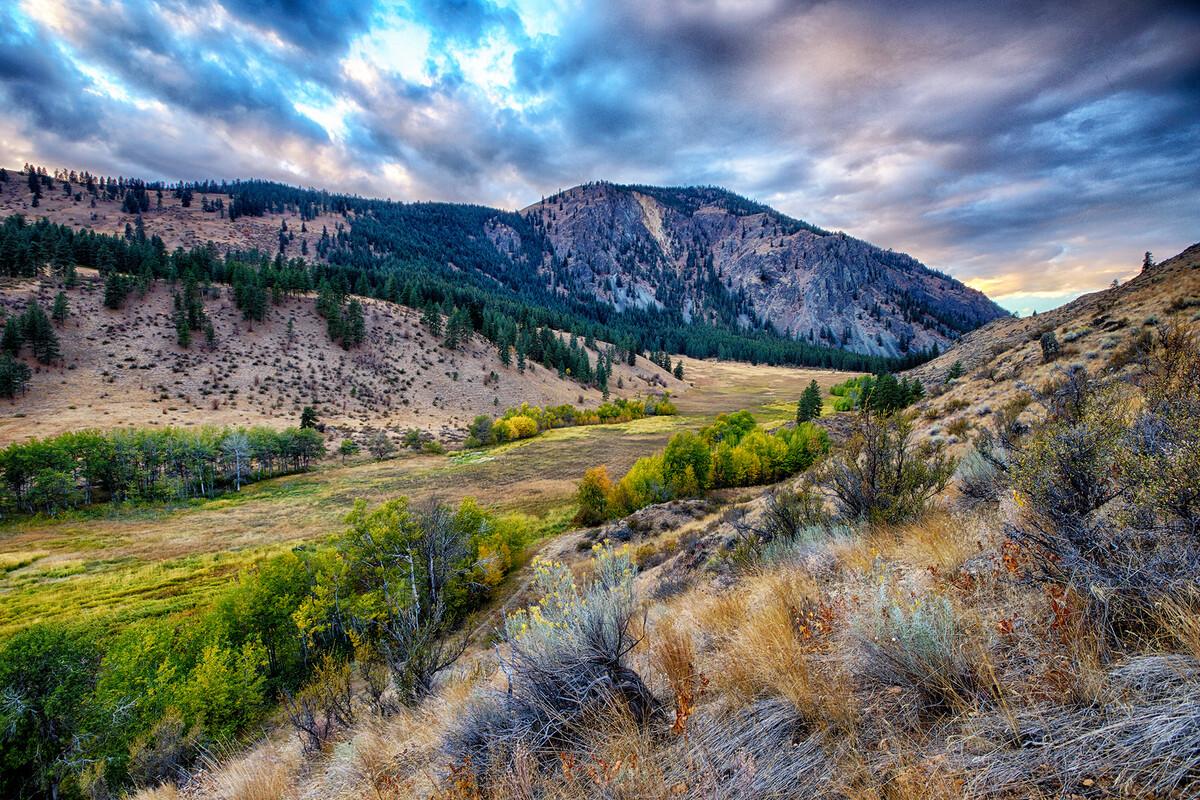
North Central - Region 2
Customer service staff in the Ephrata Regional Office are available for walk-in service 9 a.m. to 4 p.m.
1550 Alder Street NW
Ephrata, WA 98823-9699
United States
Fishing tips and news
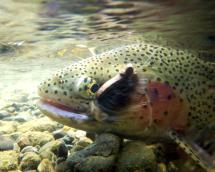
Trout
As the weather warms up many year-round lakes and others that opened last month or April 1 will have more open water to fish and prospects will improve in time for the April 27-28 statewide lowland lakes opener. The 2024 expected total plant in Region 2 of catchable-size rainbow trout is 346,007; 77,095 put-and-grow; 4,325 jumbos; plus 2,826,646 fry/fingerling that were planted in 2023 and will be decent size this year
Martha and Upper Caliche each received fall and spring stockings of ‘catchable’ 11- to 13-inch rainbow trout. Both lakes received 750 catchable-sized rainbow trout in fall 2023 and received 1,500 in March.
Within the Quincy Lakes Unit of the Columbia Basin Wildlife Area there are many walk-in lakes that opened last month. Dusty is an excellent hike-in lake for anglers wanting to get away from crowds at other more popular lakes. Each May this selective gear fishery is stocked with fingerling rainbow, tiger, and brown trout. Evening fishing along the basalt hillsides can be excellent for elusive brown trout.
Lenice and Nunnally should fish well for trout in the 14- to 16-inch range with some up to 20 inches. Both lakes received 3,000 catchable-sized trout in the fall of 2023 and will receive another 2,337 (Lenice) and 2,750 (Nunnally) in April. “Selective Gear Rules” apply on these waters.
Lenore, just north of Soap Lake on Highway 17, can be excellent in spring, especially along the lake’s north end where pre-spawn Lahontan cutthroat congregate. This selective gear fishery is stocked with 70,000 fall fingerling Lahontan cutthroat each October. Adult Lahontan cutthroat average 18 inches.
Dry Falls, located in the Sun Lakes State Park, is a popular selective gear lake for large rainbow and brown trout. Fish in the 16- to 20-inch range were common in spring 2023 and expect to see a continuation in 2024. Each spring, Dry Falls Lake is stocked with 4,500 fingerling rainbow trout and 1,000 fingerling brown trout. The lake is under selective gear rules with no combustion motors allowed.
In Chelan County, the top prospects for opening day are Beehive, Lilly, and Wapato. In Douglas County, head to Jameson. Top opening day lakes in Okanogan County are Alta, Conconully Lake and Reservoir, Fish, Leader, Long, Pearrygin, and Wannacut.
Year-round waters
Columbia River reservoirs Lake Roosevelt and Rufus Woods Lake are two of the top choices for large-sized rainbow trout along with bragging size kokanee. Late last month, the Colville Confederated Tribes Resident Fish Program stocked 23,157 triploid rainbow trout averaging 1.4 pounds apiece in Rufus Woods Lake. Additional plants are planned for April and May to boost spring-time fishing. Lake Chelan is worth a try for kokanee, lake trout, and a few Chinook salmon.
Anglers should find good fishing at Rocky Ford Creek near Soap Lake. This is a catch-and-release, fly-fishing-only stream, and only fishing from the bank is allowed. There are plenty of 16- to 20-inch rainbow trout in this stream.
Walleye fishing should pick up this month at Moses Lake in the Columbia Basin. In spring, the lake gets increased flows from Crab Creek when the local irrigation district turns on the water to the East and West Low canals. The higher flows coincide with the walleye spawning migration into Crab Creek in early April.
Three inch, dark-colored curly tail grub attached to a jig up to half-an-ounce have been successful in catching Crab Creek walleye in the past. Anglers will want their jig to be in contact with the bottom of the creek for the fish to see it.
The Potholes Reservoir is also a great walleye fishery in April, along with bank fishing for trout off the eastern shoreline. Other year-round lakes worth a try for trout are Sprague in Adams County; Fish and Roses in Chelan County; Banks, Billy Clapp, and Long in Grant County.
New license reminder
With the spring fast approaching, Washingtonians should consider purchasing 2024-2025 recreational hunting and fishing licenses.Those age 15 or older must have an applicable fishing license. Licenses are available online, by phone (1-866-246-9453), and from license dealers around the state.
Boating safety
With saltwater and freshwater fishing season openers in April, the Washington State Parks and Recreation Commission Boating Program reminds you to take a boater safety education course, if you haven’t already, to be prepared for the season. In Washington, boaters who operate a vessel with a 15-horsepower engine or greater must carry a Boater Education Card to prove they passed an accredited boating safety education course. Keep in mind that wearing a flotation device in, on or around water saves lives as drowning is one of the leading causes of fatalities especially among young children.
Assistance needed for mass-marking salmon
WDFW is looking for volunteers and hiring paid positions to assist fin clipping salmon at statewide hatcheries during spring and early summer. Anyone interested in volunteering at a WDFW hatchery can go to WDFW’s website. Anyone interested in applying for a paid marking position can look for positions in their area and apply through Kelly Services. These temporary, full-time positions pay $16.49 per hour with the ability to start immediately, no experience required, and training provided. Click here to learn more about WDFW’s mass-marking program.
Hunting opportunities and news
Wild turkey hunting
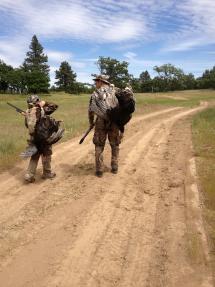
The statewide spring wild turkey hunting season is April 15 to May 31 for the general season, and a special youth only hunt takes places April 1-7. For more information, visit the Wild Turkey hunting webpage, and click here for hunting prospects.
If you are interested in giving turkey hunting a try but not sure how to get started or haven't been successful on your own in the past, there are opportunities to be accompanied by an experienced turkey hunter for mentored hunts in northeast Washington.
Hunter education
With wild turkey season just a few weeks away, you still have time to get in a hunter education course to be able to hunt this spring. These courses reinforce important firearm and hunting safety principles, hunting ethics, basic survival and first aid, and wildlife identification and conservation. For more information, visit the Hunter Education webpage.
Reporting your harvest
Mandatory hunter harvest reporting allows the Washington Department of Fish and Wildlife to better manage game species throughout the state and set permit levels for upcoming seasons. This in turn allows for more hunting opportunities. For more information, visit the hunting reporting webpage.
Wildlife watching and recreation
Sandhill Cranes
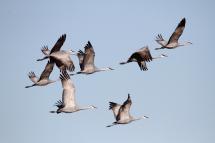
The annual migratory stopover of nearly 35,000 sandhill cranes happens in the Columbia Basin, along with lots of other early spring wildlife activity. Sandhill cranes are large, prehistoric-looking birds that migrate through the Pacific Flyway, stopping to feed and rest in the Columbia Basin on their way to nesting sites in Alaska. The greatest concentration of cranes can be found in the Columbia National Wildlife Refuge marsh units: Frenchmen Reserve, Potholes Reservoir, Scootney Reservoir, and Winchester Reserve.
Bird migration
In addition to cranes, bird watching is picking up throughout the region as migrants move into and through northcentral Washington.
Grant and Adams counties in the Columbia Basin are teeming with waterfowl of all kinds including Canada geese, tundra swans, and various duck and shorebird species.
WDFW’s Sinlahekin Wildlife Area is particularly good in early spring for bird watching, with trumpeter and tundra swans, goldeneye, bufflehead, ring-neck ducks, hooded mergansers, and more.
Open waterways throughout Okanogan and Chelan counties draw a variety of waterfowl, too. Later in the month, blue grouse will be begin mating. Give the birds some space to conduct their courtship displays by using binoculars and scopes to watch. Other migrants- including bluebirds, blackbirds, grosbeaks, killdeer, and robins- are also being spotted throughout the region.
Negative wildlife interactions
Small animals like raccoons, skunks, and marmots are abundant throughout the region in rural and urban environments this time of year. They can create negative interactions with humans when they make nests in places such as crawl spaces, under porches or corners of garages or sheds in which to give birth. Learn how to enjoy these wildlife neighbors without problems at WDFW’s Living with Wildlife webpages.
Spring is a busy month for the birth of baby animals. A reminder that if you run into fawns, baby birds, or other young animals, please leave them be, even if they appear to be orphaned or abandoned. Most animals have a parent foraging or hunting nearby. Read our blog to learn about when not to rescue wildlife.
Conserving species and habitats
Practice bear awareness this spring
Black bears are common throughout Washington, including suburban areas. Both when preparing for hibernation and awakening from it, they look for high-calorie foods that are easy to obtain. These may include garbage, bird feeders (both seed and liquid), fruit trees, and pet food.
As human populations encroach on bear habitat, people and bears have greater chances of encountering each other. Food sources provided by humans, whether intentionally or not, can attract bears. Removing these attractants is the best way to encourage bears to move along and focus on natural food sources.
Ask your local waste management company if bear-resistant containers are available or if individually purchased bear-resistant containers are compatible with the company’s equipment. Secure your garbage cans, such as in a shed or garage, and put them out the morning of pickup — not the night before. To help reduce odors, freeze meat and fish waste before disposing of it and spray garbage cans with disinfectants.
More information on living with bears is available on our website.
Wildlife Program biweekly reports
To read reports published prior to 2024, visit the Biweekly Wildlife Program activity reports page.
Meet your Regional Director - Brock Hoenes
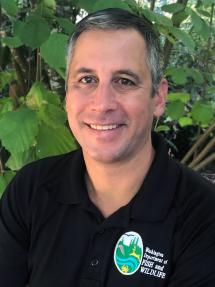
Brock Hoenes is the North Central Region (Region 2) Director. Brock started his career with WDFW in 2008 and has held positions with the department including ungulate section manager, assistant district wildlife biologist, district wildlife biologist, statewide WDFW elk specialist, and deer and elk section manager.
Prior to moving to Washington, Hoenes worked for the New Mexico Department of Game and Fish and the New Mexico Cooperative Fish and Wildlife Research Unit on a variety of research projects focused on mule deer, bighorn sheep, elk, cougars, black bears, and pronghorn. Hoenes received his B.S. in Fish and Wildlife Management from the University of Missouri-Columbia and his M.S. in Wildlife Sciences from New Mexico State University.